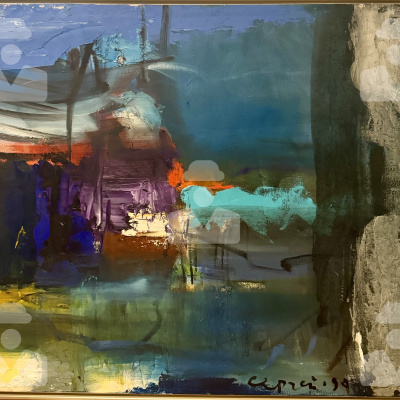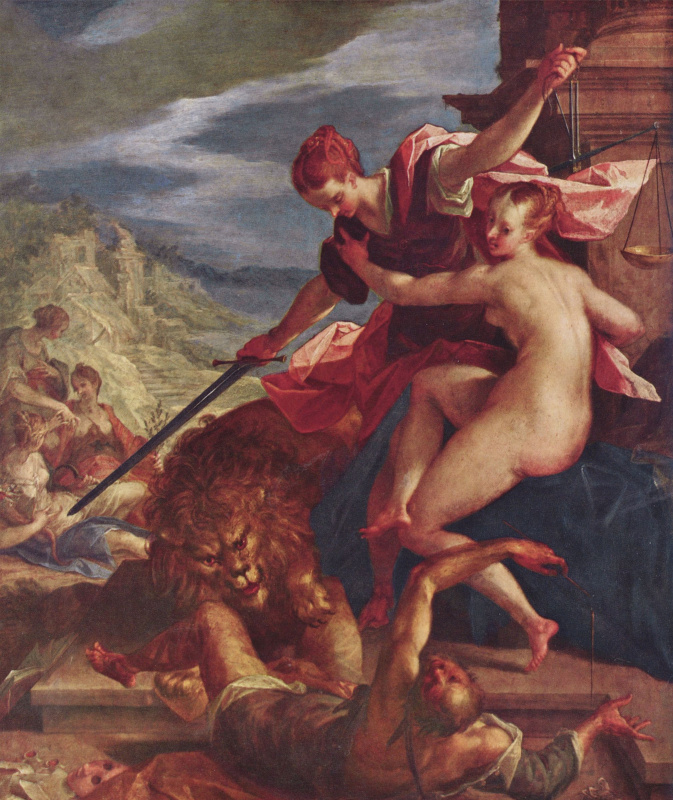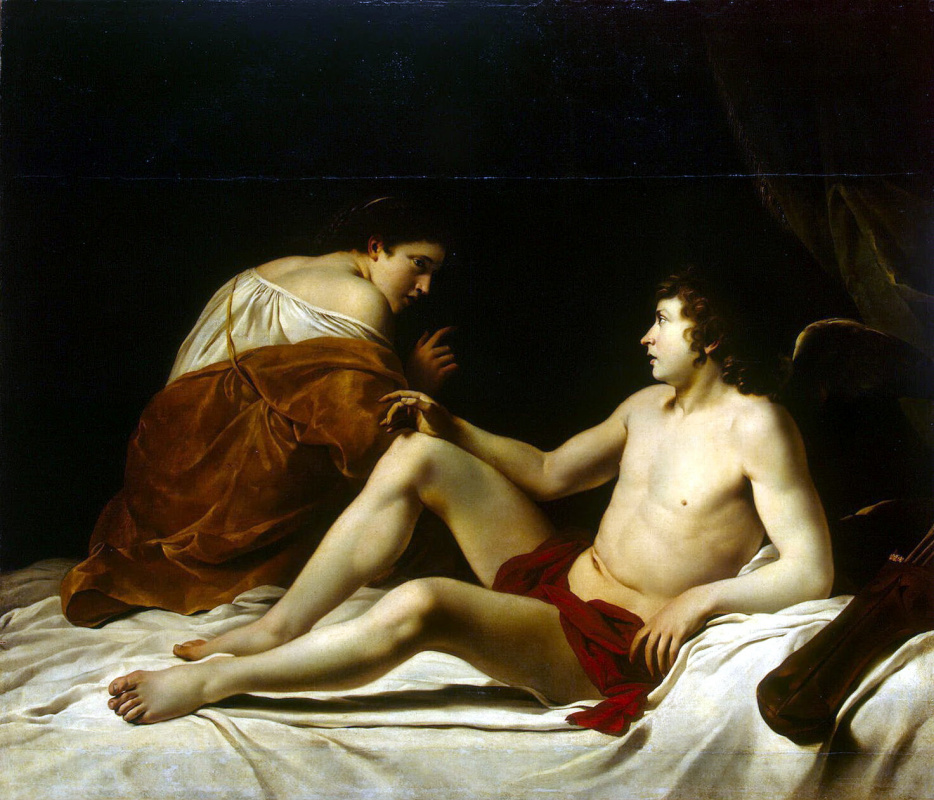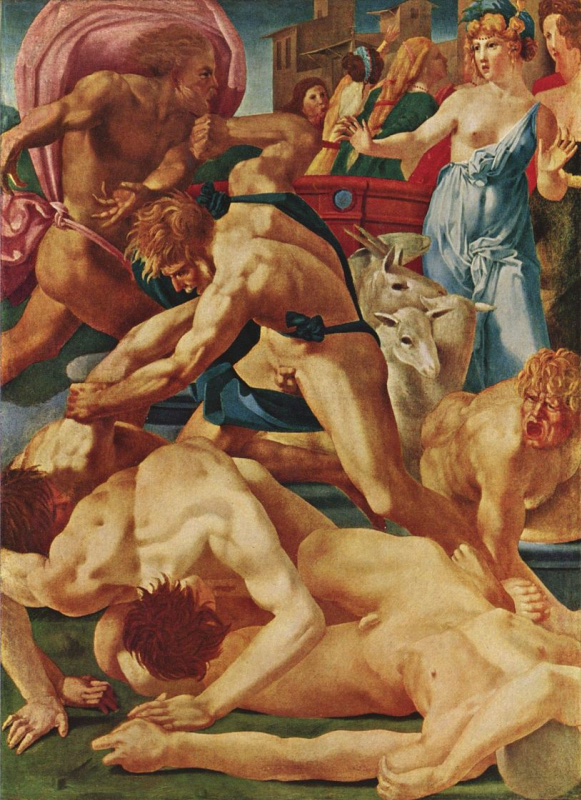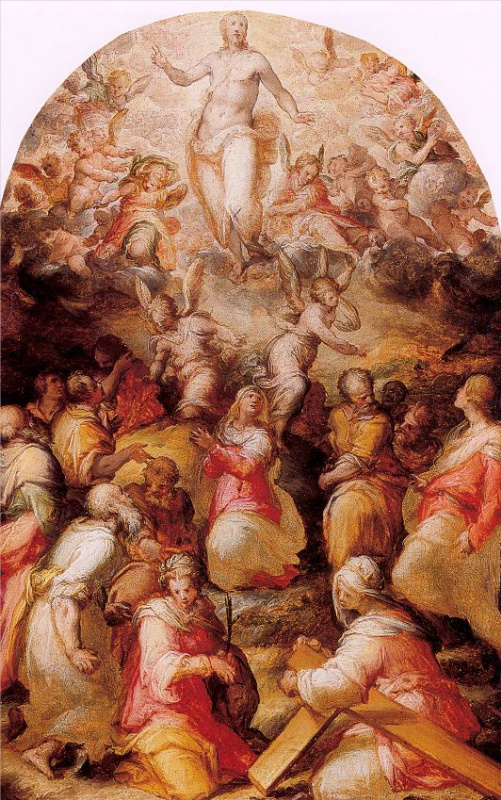Mannerism (it. maniera — manner) is a Western European literary and artistic style, that was popular in the 16th — first third of the 17th century. That was the time of the peak in art of posing and the love of artsy poses.
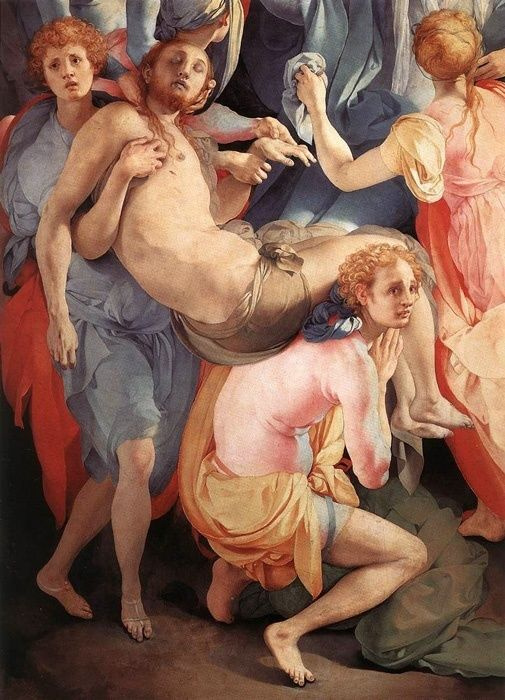
To understand the essence of the style, we should realize what does "cutesy pose" mean. This is an unnatural, far-fetched pose a person takes in order to draw attention to his originality, unusual inner world and other qualities; it is his whim or simply fear of being unnoticed. Actually, this is the characteristic feature of Mannerism: the characters on the canvases take those very cutesy poses. To some extent, this art of posing has been adopted by modern models, which are shot for fashion stories of expensive glossy magazines.
Key features of mannerism
Cutesy poses, pomposity, broken lines, unusual interiors in paintings, a special aristocratic whiteness of bodies, faces seem languid, often nudity or exotic clothes on the subjects — these are the features of this style. The composition, as a rule, is oversaturated with a lot of subjects or details requiring attention. The figures are elongated, the proportions are slightly deformed, the postures are tense, the colour scheme is quite contrasting, with many fragments of juicy colours.Mannerism valued the external shape much more than the spiritual content. People seemed to strive for spirituality, but at the same time they were less and less afraid of their hidden desires. Therefore, in such paintings, there was place for eroticism and nudity.
Some scholars believe that Mannerism is not a separate style, but only an early phase of the Baroque. Though, most art historians do not support this idea.
Some scholars believe that Mannerism is not a separate style, but only an early phase of the Baroque. Though, most art historians do not support this idea.
Why did it appear?
The fine "manners" on the painted canvases arose among the followers of Leonardo da Vinci, and they reigned in the privileged circles of Italy by the middle of the 16th century. The painters travelled through Europe quickly spreading the "new fashion" to France, Spain, and Germany. At that time, the ideals of the Renaissance already began to lose their relevance. That was the period when the harmony of spiritual and physical beauty, which had been praised in the Renaissance , was lost; the artists began to search for new methods and techniques. Mannerism was the beginning of a new era in art. That was a pretentious court style. Art did not seek to be understandable and life-affirming. Artists wanted to show that painting was not for everyone, but only for the elite, so there were a lot of hidden symbols in the paintings that could not be understood without a specific knowledge.By the way, the era of mannerism was a favourable time for architecture — the creators had more opportunities to change forms, saturate space. Mannerism in architecture is quite expressive. Surrounded by such buildings, a person feels certain restlessness, randomness, but still wants to watch the buildings. The iconic structure of the Mannerist era is the Laurentian Library in Florence, designed by Michelangelo.
Famous artist of the style
Francesco Parmigianino, Jacopo Pontormo, Giovanni Battista Naldini, Giuseppe Arcimboldo, Bronzino, Rosso Fiorentino, Francesco Salviati, Orazio Gentileschi. Partly the influence of Mannerism is also traced in the works by Raphael, Michelangelo, Titian and El Greco.You’re an expert, if:
— you have noticed that the main signs of mannerism are elongated figures, strange gestures, hidden symbols, exotic costumes of characters, bright, contrasting tones that appear on a pastel background. You noted both the saturation of the composition and the "aestheticization" of individual elements, such as the hand lines, silhouette, a separate bright spot in the composition!
You’re a layman, if:
— you cannot distinguish Mannerism from Baroque . The fundamental difference: Mannerism has more cutesy gestures, while Baroque suggests less pomposity, idleness, wealth in decoration, and there is some sense in the depicted action. Not just a gesture for a gesture, but roses for roses.
— you have noticed that the main signs of mannerism are elongated figures, strange gestures, hidden symbols, exotic costumes of characters, bright, contrasting tones that appear on a pastel background. You noted both the saturation of the composition and the "aestheticization" of individual elements, such as the hand lines, silhouette, a separate bright spot in the composition!
You’re a layman, if:
— you cannot distinguish Mannerism from Baroque . The fundamental difference: Mannerism has more cutesy gestures, while Baroque suggests less pomposity, idleness, wealth in decoration, and there is some sense in the depicted action. Not just a gesture for a gesture, but roses for roses.






